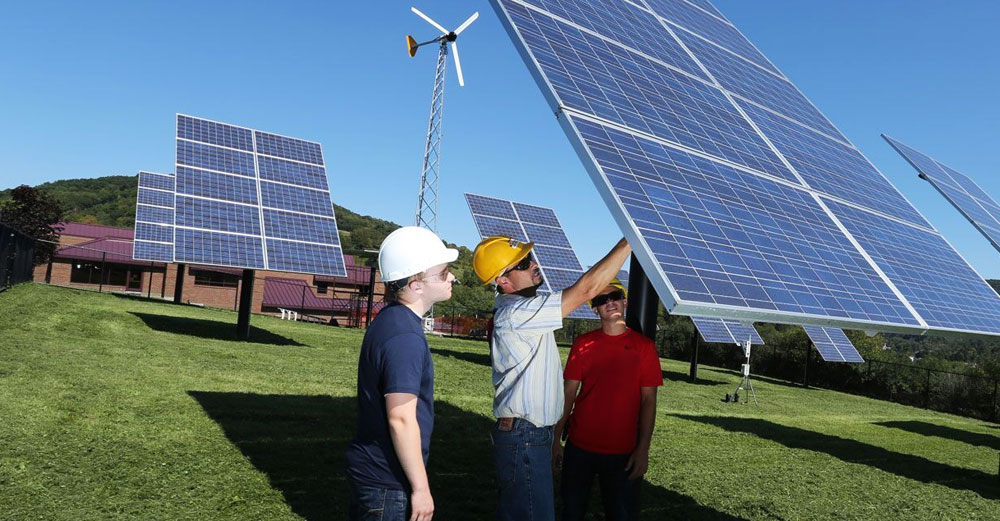
The reports of climate change echo in our news cycle quite frequently now. As we continue to look for solutions to help mitigate the problems that a changing climate bring to us, one of the most frequent fields that can make a difference is clean energy. Changing the way we consume and produce energy to power through our days at work, home, and in travel will allow us to bring notable change to our effects on climate.
New York State is fully committed to clean energy, and SUNY is the leading driver to bring this change to the state. With new construction projects to meet net zero carbon goals, the modifying of existing buildings to achieve deep energy retrofits, and training students for the clean energy workforce of the future, SUNY’s efforts to advance New York’s clean energy goals are evident at all 64 schools.
There are many examples of these efforts, but some key examples making an impact in 2019 are:
Net-zero Energy Buildings
Much of the infrastructure on SUNY campuses is getting older, making them less energy efficient in their operations. But there is now a concerted effort to improve on these buildings to make them more modern and energy efficient for students, faculty, and staff. The first building to work toward a zero-net energy classification will be Ford Hall at SUNY Oneonta. SUNY Oneonta is partnering with New York State Energy Research and Development Authority (NYSERDA) and the state Dormitory Authority to completely retrofit Ford Hall as a net-zero energy building. The 213-bed dorm is the first in the system to undergo a retrofit of this type, and it will serve as a prototype for the entire SUNY system. Work on this building will begin this summer.
Developing the Clean Energy Workforce of the Future
With more clean energy technologies being produced and used across industry and community, the economy needs a workforce that can support both production and maintenance of these tools. As part of Climate Jobs NY, a component of Clean Climate Careers initiative, New York has made a $15 million investment in the SUNY Clean Energy Workforce Development and Training. These programs will increase the number of apprenticeships, internships and educational programs with industry partners that are available across the SUNY system.
In this recent investment, 10 SUNY campus proposals received a portion of the award money to carry their projects forward.
Energy to Lead
Clean Energy Innovation is happening throughout New York State, and SUNY is a leading force in these developments. Suffolk County Community College was one of three schools to have been awarded $1 million in the Energy to Lead Competition. This competition challenges colleges and universities across New York State to develop plans for clean energy projects both on campus and in their communities to fight the effects of climate change. With this award, Suffolk County Community College will put net-zero energy components to use during construction of its Renewable Energy & STEM Center. The building, when complete, will serve as an energy conservation and learning resource center and be the first of its kind at SUNY and on Long Island.
Sustainability on Campus
SUNY schools are making clean energy a key component of campus life across the system. One great example is at Farmingdale State College, where the mission of the Renewable Energy and Sustainability Center has a very close connection to modern day energy trends and needs. The center seeks to enhance public awareness of emerging renewable energy resources through applied research and workforce training in the renewable/sustainable and smart grid technologies. In use at the center are a solar carport, EV charging stations, a Smart Energy Home with a solar photovoltaic system, solar thermal energy generation, and three wind turbines. Students get to see, feel, and learn about sustainable energy in all of their campus activities.




This is a really very good idea .Climate change is the most common problem all over the world .So we should take proper step to protect the earth.